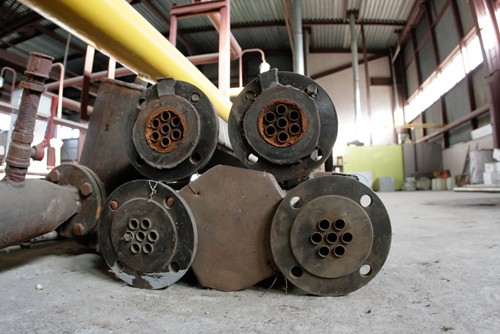When processing liquids in a shell and tube heat exchanger, it is critical that everything is in order. If a small part of the exchanger is broken, flawed or contaminated, the entire batch of liquid will not be suitable for consumption. According to UK Essays, shell and tube heat exchangers are adaptable to many different industries, and are therefore the most popular style of heat exchanger. Shell and tube heat exchangers are used in a variety of consumer-directed industries, such as dairy, food and beverage, and pharmaceuticals. It is essential that consumers can trust that the processing procedures are adequate in keeping them and their families healthy.
“Maldistribution is the uneven flow of liquid through tubes.”
A common problem among shell and tube heat exchangers is maldistribution. Maldistribution is defined as an uneven flow of liquid through the various tubes comprising the tube side of the heat exchanger. This problem has several causes, but one main effect: It can cause the tubes to pull out of their designated space on the tube sheet, explained Chemical Processing. They can also become warped and damaged in the process, according to Wermac, a website dedicated to piping education and information.
Maldistribution causes problems
Once the tubes pull out of the tube sheet, heat-transfer liquid can leak into the solution being processed. Some of the product can also be lost to the heat-transfer liquid. This results in an impure product not suitable for use or sale. The problems associated with this type of error can be costly and time-consuming in many ways. First, there is the cost and time it takes to repair or replace the damaged parts. Then, the question of fixing and preventing the relapse of the maldistribution. Finally, the time and cost of reproducing another batch of product will result in profit losses.
UK Essays also explained that maldistribution would cause the heat exchanger to cease operating at top performance. Heat is not transferred as well when maldistribution occurs and the problems that cause it exist.
The best way to avoid the issue of tube damage and pullout is to prevent maldistribution from happening. There are several common problems that lead to this malfunction.
Thermal expansion
Chemical Processing reported inconsistent temperatures can lead to thermal expansion. When the shell side heats up rapidly but the tube side remains cool, the shell is prone to expansion. The tubes are then left behind as the tube sheet expands, causing the tubes to be removed from their place in the sheet.
“Inconsistent temperatures can lead to thermal expansion.”
Wermac explained this problem can be avoided with the installation of an expansion joint. An expansion joint can be installed either on the shell side or the tube side of the heat exchanger, though the least expensive option is to install it into the shell pipe.
Evenly dispersed flow
UK Essays examined the flow of a shell and tube heat exchanger to discover another cause of maldistribution. When a company uses a heat exchanger, it is expected that the liquid being heated will be evenly divided among each tube. However, there are some things heat exchanger operators should be aware of to make sure this is the case.
UK Essays found that when the flow rate, or Reynolds number, is increased, maldistribution is more likely to occur. To balance this out, the pressure drop needs to be increased. This can be done with a longer header part of the heat exchanger. Another way would be to decrease the velocity of the liquid.
Liquid distribution systems
Chemical Processing described another potential cause of maldistribution. When liquid is dispersed among the tubes using a spray system, it is crucial the pressure is high enough to evenly distribute the product among all tubes available. Furthermore, it is important the liquid is kept at a constant temperature and has low possibility of vaporization. When this occurs, there are bound to be temperature inconsistencies. This will cause localized thermal expansion, causing maldistribution.
The best way to ensure the liquid is able to be dispersed uniformly among all tubes via a spray nozzle is by using a bottoms recirculation system.
Maldistribution can be caused by a variety of issues in the design and the use of a shell and tube heat exchanger. Regardless of how it is caused, maldistribution can lead to serious consequences and a failed product batch. To prevent this from happening, companies should invest in custom stainless steel shell and tube heat exchangers and learn about additions that could help prevent maldistribution, such as expansion joints and bottoms recirculation systems.

